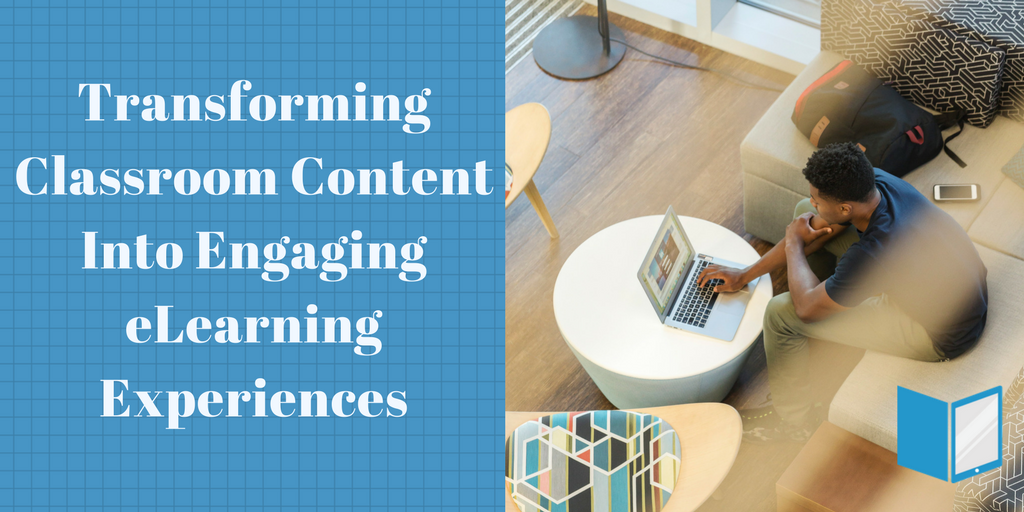Digital technology has revolutionized the way people learn and has made higher education more accessible. Currently, the minimum requirements for online learning are an internet connection and a computer providing students with the flexibility to learn from anywhere. In addition, many students can maintain full-time jobs while also participating in distance education classes. The Online Learning Consortium has determined that there are over 6 million students enrolled in at least one eLearning course.
As more colleges and universities transition to online learning, the demand to convert classroom materials to eLearning has increased dramatically. This demand is driven by scalability, ease of use, and the ability to create self-paced learning environments via eLearning. However, there are several factors to keep in mind when converting traditional classroom materials to online learning.
Scaffolding and Sequencing Content
One of the biggest misconceptions when transitioning classroom content to eLearning is that the content can be transformed into eLearning without making any modifications. Unfortunately, this approach often leads to poor learning experiences, and leaves many students dissatisfied with online learning.
The proper organization of classroom content is critical when transitioning traditional materials to eLearning. The scaffolding, sequencing, and “chunking” of courses, lessons, and modules becomes more apparent during an eLearning course, and if the content is not sequenced properly it can lead to gaps in student understanding. The goal is to have the eLearning materials provide a high-level overview of the course while also demonstrating that each module builds off the previous one to reach the course objectives. This allows the learners to grasp the essential concepts developed within the course.
Eliminating Content Gaps
Often in traditional classroom instruction, concepts are conveyed through stories or examples while the instructor interacts with the students by guiding them towards the mastery of the concept. However, in eLearning environments, interaction with an instructor often isn’t possible. eLearning courses need to fill in these types of content gaps with relevant case studies and examples that allow students to continue to continue to “unpack” and interact with the content and guide their own learning. It’s important to remember that adding a case study or example to the eLearning course should not interrupt the flow of the course; the case study or example should be a logical next step to mastering the content.
Add Interaction
“Click-Next” eLearning courses are uninteresting and cause students to disengage from the content without understanding the concept. Interactive eLearning scenarios or interactions help bring static classroom content to life for the learners. eLearning courses should contain interactive elements that helps solidify student learning. For example, scenario-based eLearning is a great way to have students engage with the content through relevant and authentic situations.
Check Student Understanding
Formative assessments are often used by instructors in classroom settings to measure student understanding. These assessments can come in the form of an informal question and answer session, a pop quiz, or a reflective journal entry. However, in eLearning courses assessments need to be created and built into the course materials. These assessments should also contain interactive elements to keep the learner engaged. In addition, one of the benefits of building assessments into eLearning courses is that students get immediate feedback on their progress and understanding of the content. This helps the student recognize what they’ve mastered and where they need more practice.
Transitioning traditional classroom content to eLearning can be an exciting experience, but it’s important to remember that not all classroom content should be converted to eLearning. There are some topics that are best conveyed using blended methods which include both a classroom component and an online component. As higher education institutions continue to embrace eLearning, it’s critical that classroom content is transformed into meaningful online learning experiences for students enrolled in distance education programs.
You can start you digital transformation today! Start creating classes and courseware that will improve your students learning environment. We can show you how much our authoring tool and platform can do, including assessements, direct export to LMS, and collaborative, real-time editing to a mobile app or the web.
Read More:






Leave a comment